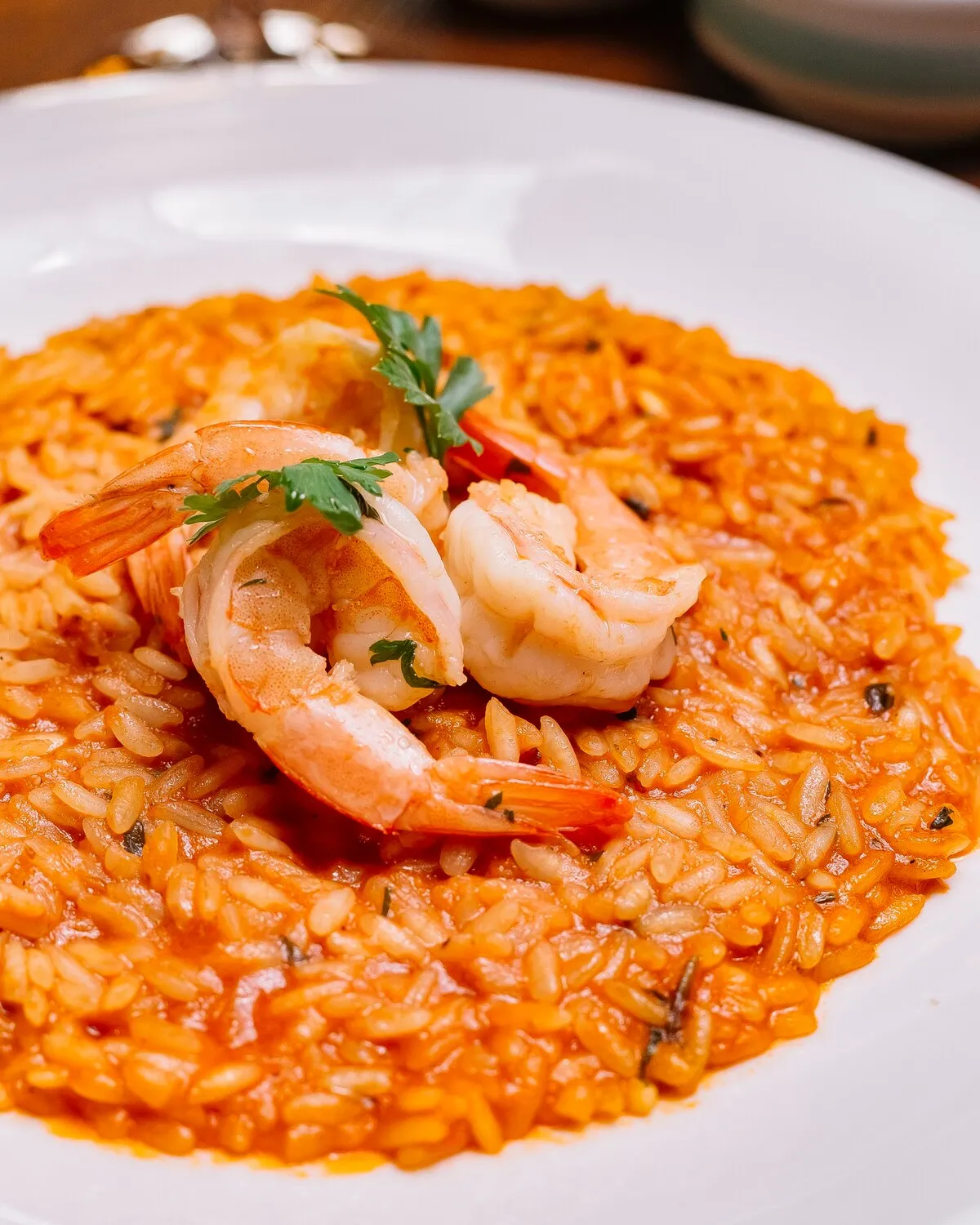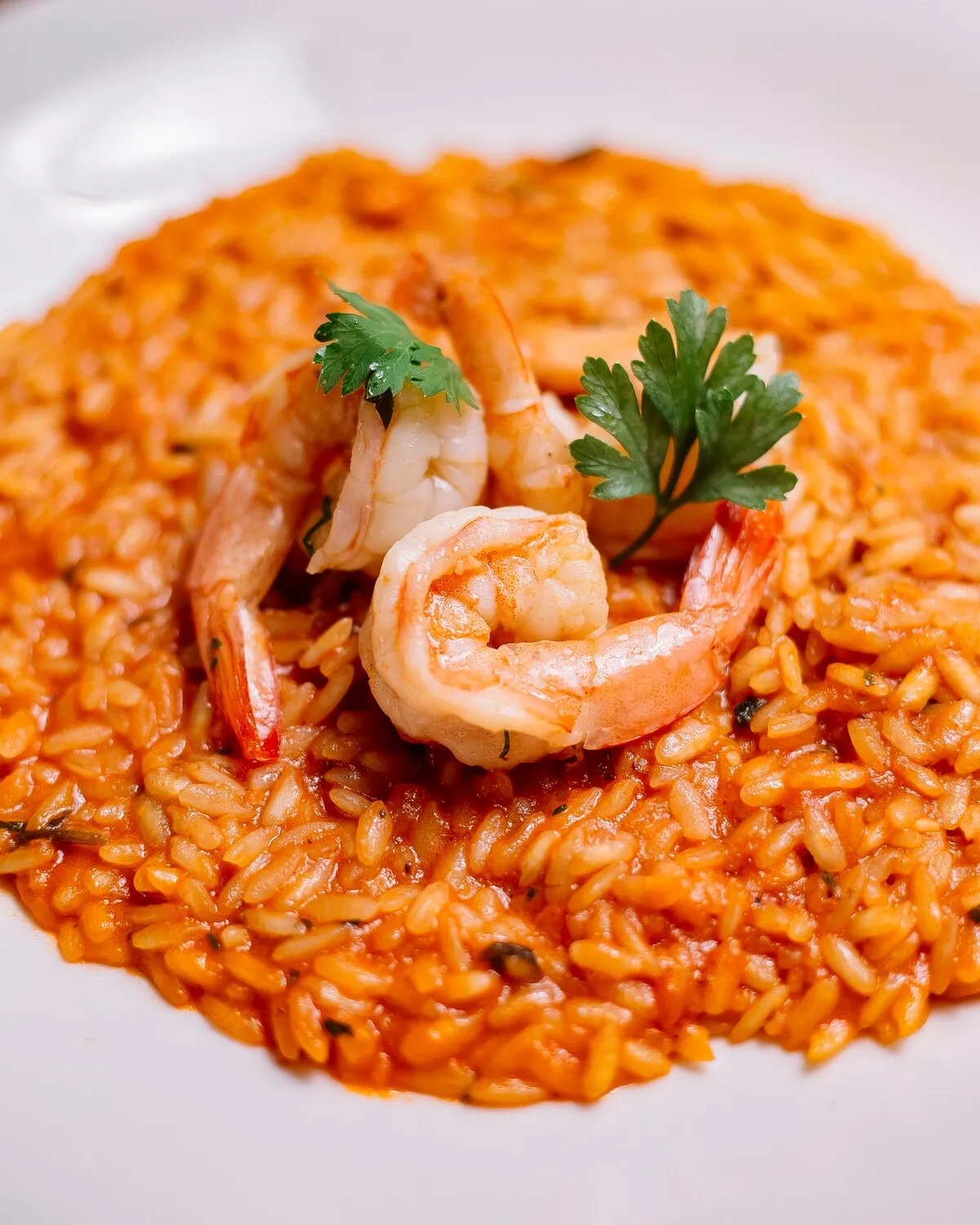
Risotto de Hongos
Creamy risotto with mushrooms.
Nutrition Facts
* The % Daily Value (DV) tells you how much a nutrient in a serving of food contributes to a daily diet. 2,000 calories a day is used for general nutrition advice.
Risotto's origins can be traced back to Arabic influences in Sicily during the Middle Ages, where rice cultivation was introduced. Northern Italy, particularly the Po Valley, became the ideal region for rice cultivation, leading to the development of various rice-based dishes. The dish evolved over centuries, incorporating local ingredients and culinary techniques. The first version of risotto as we know it dates to 1809. The mushrooms, a prized ingredient in Italian cuisine, were later incorporated to create Risotto ai Funghi, showcasing the country's rich fungal diversity.
Risotto de Hongos is deeply embedded in Italian culinary culture, representing comfort, seasonality, and the appreciation for fresh, local ingredients. It's often seen as a dish to be savored and shared, representing hospitality and conviviality.
Regional Variations
While the basic concept remains the same, regional variations exist. Different regions might use specific types of mushrooms native to their area, and cheeses other than Parmesan may be incorporated, such as Grana Padano or Pecorino Romano.
Seasonality
Risotto de Hongos is often associated with autumn and winter when wild mushrooms are in season. The dish celebrates the bounty of the forest and the comfort of warm, hearty meals during colder months.
Family Gatherings
Risotto, in general, is a dish frequently prepared for special occasions and family gatherings. The process of making risotto is seen as therapeutic and requires attention, reflecting the care and dedication put into the meal.
Risotto de Hongos is a symphony of earthy, savory, and creamy flavors, with the mushrooms taking center stage.
The primary flavor profile is defined by the umami richness of mushrooms, often a blend of varieties like porcini, cremini, and shiitake. These mushrooms impart a deep, woodsy flavor that is amplified by the butter and Parmesan cheese, creating a rich, savory base. The Arborio rice provides a starchy creaminess as it releases its starches during cooking. White wine adds a subtle acidity, balancing the richness and enhancing the other flavors. Aromatics like garlic and shallots contribute a delicate sweetness and complexity. Fresh herbs like parsley or thyme provide a bright, herbaceous counterpoint.
Rice Selection
Arborio rice is the most commonly used variety, prized for its high starch content, which contributes to the creamy texture. Carnaroli is another excellent choice, offering even greater creaminess and a slightly firmer bite.
Stock Temperature
Use warm stock. Cold stock will cool the rice down and prolong the cooking time, leading to uneven cooking.
Stirring Technique
Stir frequently, but not constantly. Frequent stirring encourages the rice to release its starch, creating the characteristic creamy texture. Avoid over-stirring, which can make the risotto gummy.
Mushroom Preparation
Don't overcrowd the pan when sautéing the mushrooms, as this will cause them to steam instead of brown. Sauté them in batches to achieve a deep golden-brown color, which enhances their flavor.
Mantecare
At the end, 'mantecare' the risotto by stirring in butter and Parmesan cheese off the heat. This creates a final layer of richness and creaminess.
Explore additional Risotto dishes and restaurants
Explore RisottoDiscover top dining spots and culinary experiences in San Carlos.
Explore San CarlosLearn more about the food culture, restaurant scene, and culinary heritage of United States.
Explore United States
